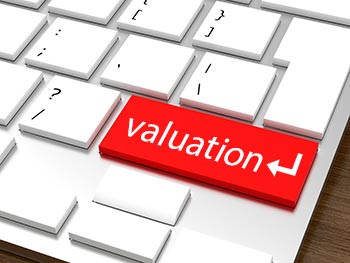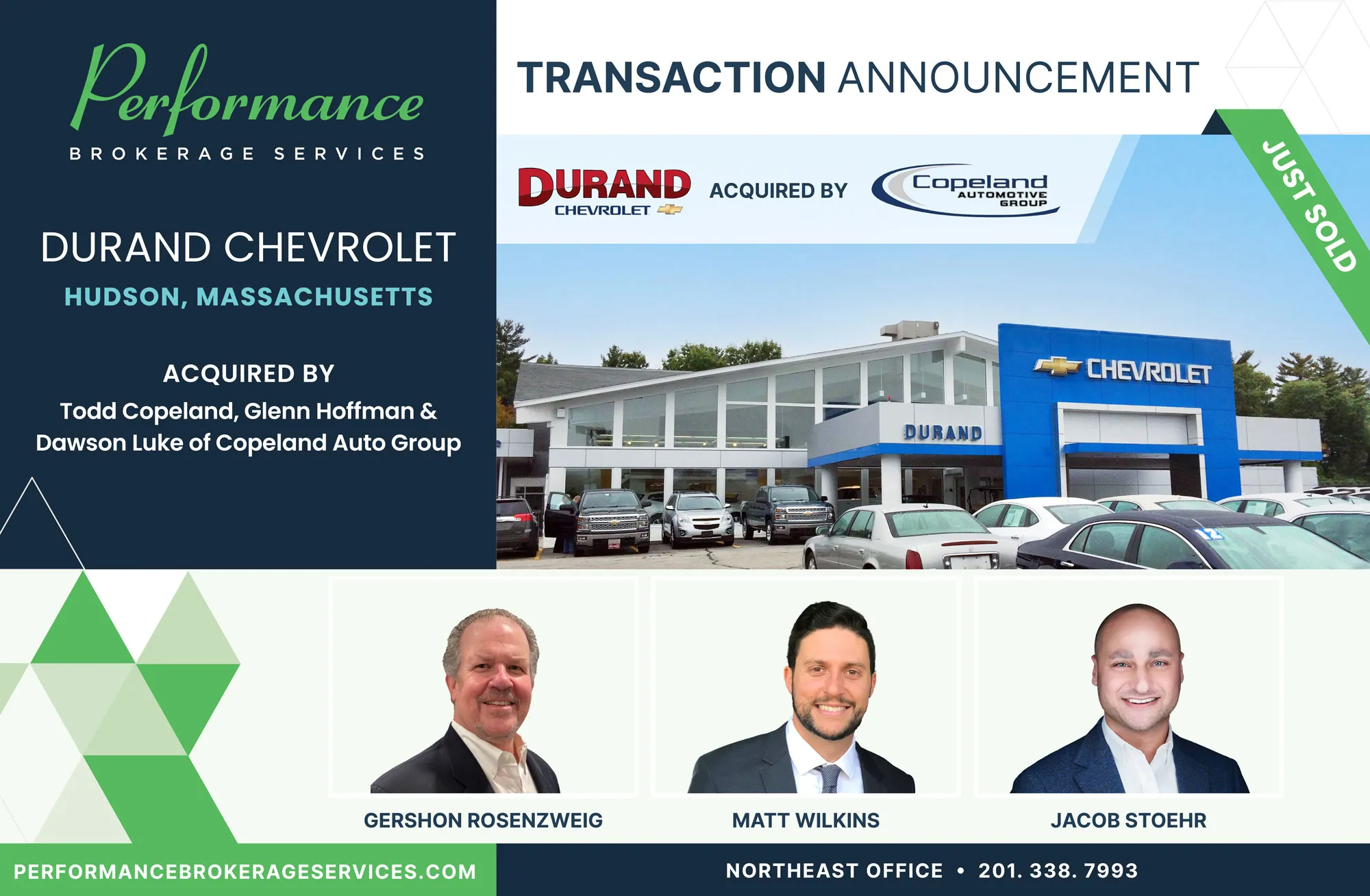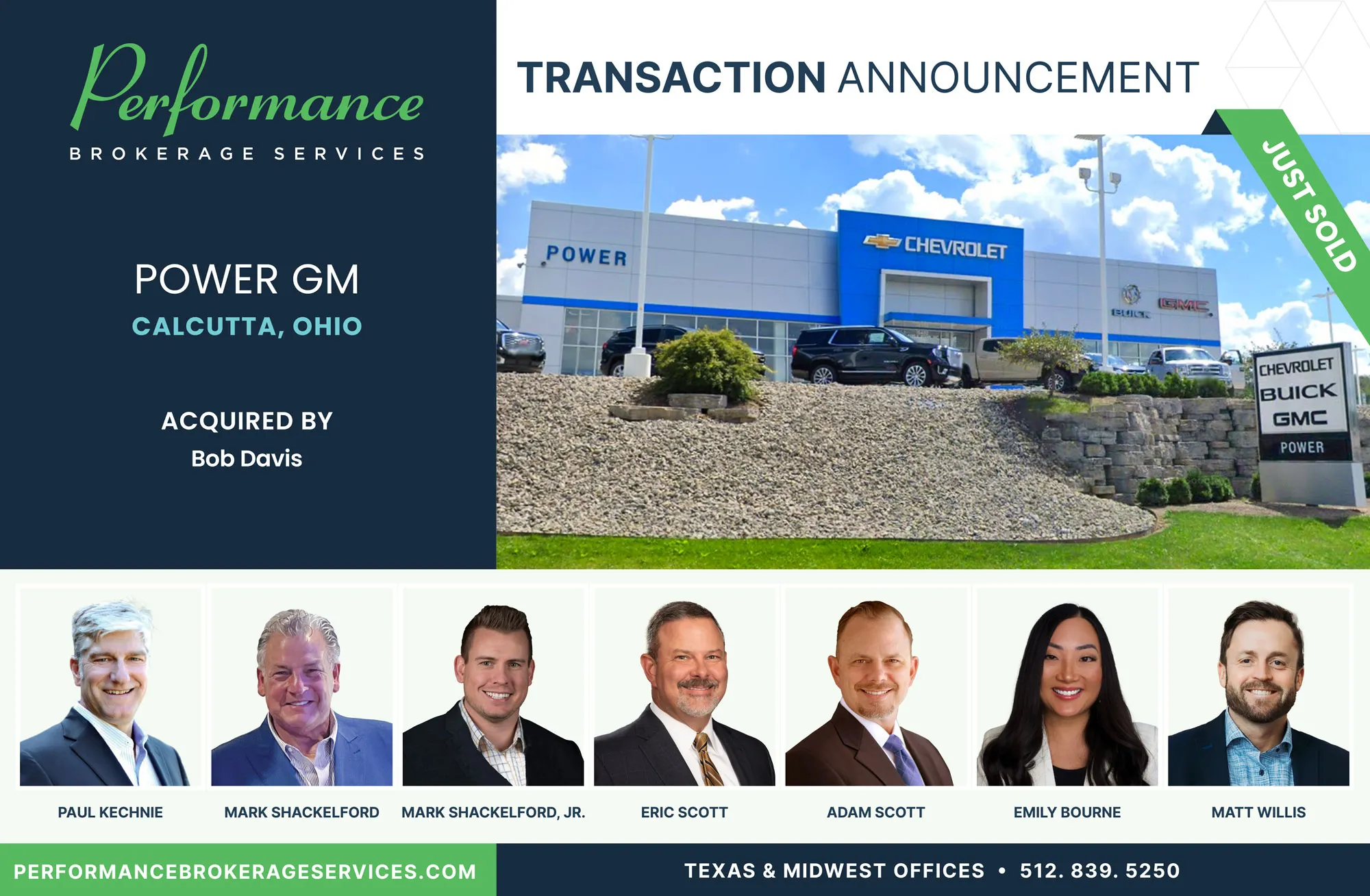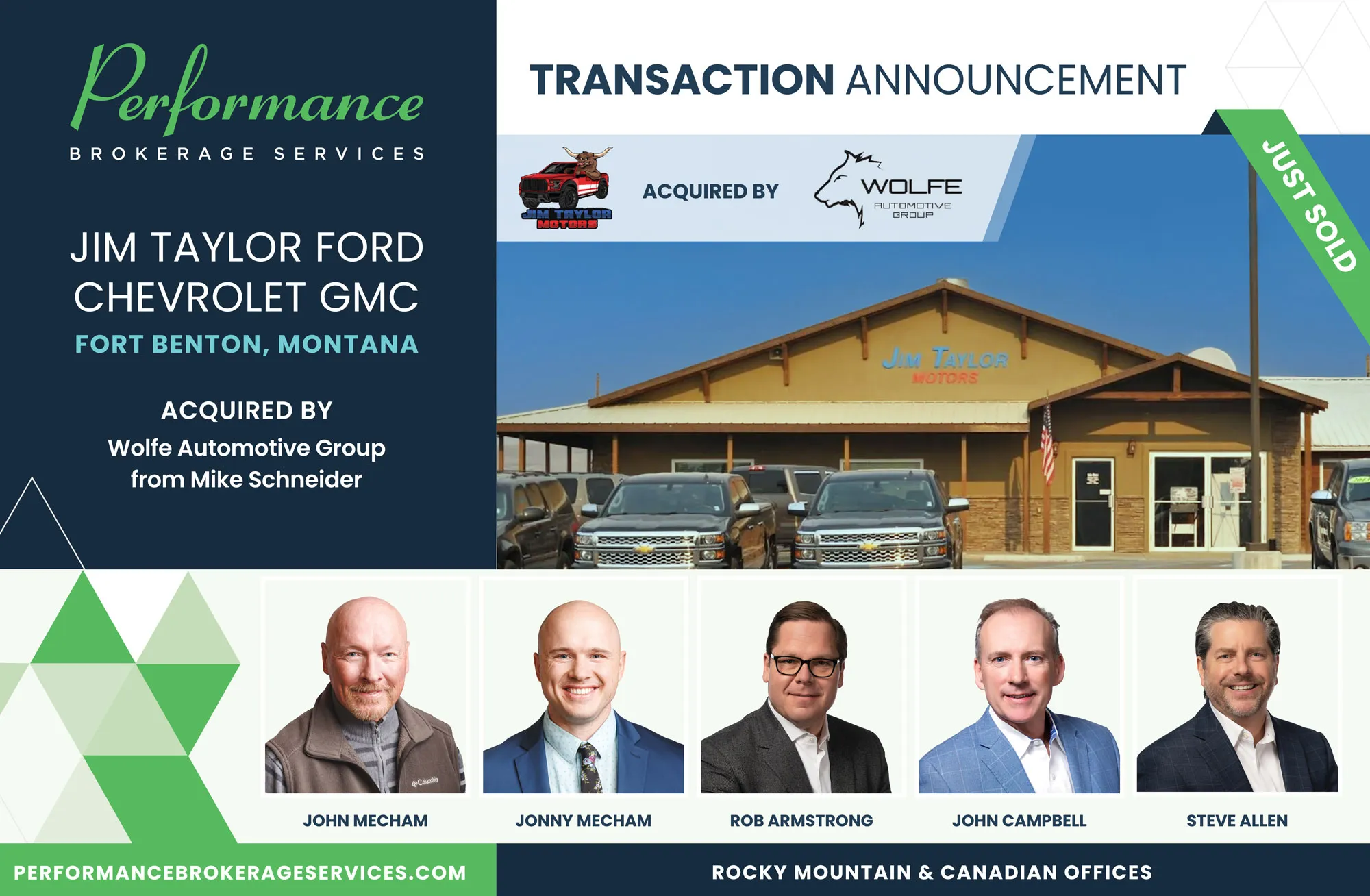Net profit of a dealership does not impact the goodwill as much as you were led to believe.
What is your car dealership worth? How do you know? Gut feeling? Accountant’s opinion? Articles in the Automotive News? Published articles from ‘experts’? Well, most likely your opinion was formed based on recent articles and publications that speak in part about a concept they call, the ‘multiple of earnings’.
We have come across those published articles as well recently and have become increasingly concerned about them circulating in our industry and getting more and more traction. Such publications are making reference to ‘multiple of earnings’ as a benchmark to valuations, offer monthly or quarterly updates and suggest fluctuations by brand, etc. Some have even made their way into formal valuations prepared by CPA’s, relying on that data. Please pause for a moment and ponder a statement that reads that a specific brand trades for 3-5 times earnings…? What does that even mean? First, the difference between 3 times and 5 times is 66%…so where is the value for the reader? And then, three months later the updated report moves the brand’s multiple up or down by 0.25 percentage points? Really? How can that be taken seriously? It is irresponsible and frankly, exhausting!
Beware, such representations are incomplete at best. There is much more that you need to know about the value of your dealership and the way it should be established.
We have been assisting car dealers for over 25 years in facilitating the sale of their dealerships, and in many cases, the assets represented much of their net worth, planning for retirement. Our concern is that incomplete data could mislead dealers to false pricing expectations, flawed financial planning, and even wrong costly decisions.
For years, we have heard dealers and brokers use different rules of thumb when discussing the value of dealerships. We have never been fans of those rules, and especially of the one rule that is now being promoted the most – the ‘multiple of earnings’.
In June 1995 an article published by NADA referred to this rule of thumb as a “greater fool’s theory”. Later, in a 2004 publication, it further stated that it is “rarely based upon sound economics or valuation theory”. We could not agree more with those statements, especially in today’s uncertain environment which surrounds the new car industry.
Multiple of earnings to establish a value of a dealership? We think it is skewed at best, misleading, and frankly, an irresponsible approach when valuing a dealership for a sale. Which earnings? Is it of the most recent twelve months? A three-year average? A five-year average? Weighted averages perhaps? And if so, what weight is given to each year? But wait, if the dealership loses money, what multiple will you be using then? Zero? Well, of course not. We have sold many dealerships for millions of dollars that lost millions of dollars.
A new car dealership is a franchised business with territorial protection and commands intangible value in addition to its hard assets, even if it loses money.
Every dealership is complex and atypical, and every buyer is unique. Most car dealerships are privately held and are sold to other private parties, each under unique circumstances.
IGNORE COMPARABLES
Unlike residential homes, there are no comparables to rely on. Multiple listing services do not exist in our industry. And even if a centralized data center existed, it should not be relied on as the data is incomplete as one size does not fit all. Every dealership should be valued independently. No single valuation method, comparables, set of rules or any rule of thumb can determine the value of a dealership. Each dealership is matchless with unique circumstances that surround it. The information of what all dealerships and franchises trade for is not available to one source or any group.
The only ones that have knowledge of what dealerships trade for are the principals and their advisors, bankers and the manufacturers. Well, bankers don’t share the data with one another and the manufacturers are only privy to the information stated on the financial statements and have no access to the re-casted earnings.
The values of two dealerships selling the same brand, showing the same sales and netting the same amount, could vastly differ for a multitude of reasons. The value of goodwill is not an exact science and requires judgment regarding a host of factors such as:
• The history and background of the dealership
• Brand desirability, its market share and strength at that moment in time
• Geography, location, PMA, demographics, competition, single point or metro
• Earnings sustainability and growth potential
• Management, reputation, customer loyalty
• Fixed operations gross, sales expectancy, units in circulation in the AOR
• Real estate and facility size, price and condition
• Operational risks when the market softens and (inevitable) disruptions occur
• Reason for selling, Cap-X requirements, union, unfunded liabilities, state laws, etc.
In the narrow view of using just the net earnings to establish the value of a dealership, how do you define ‘earnings’ for that purpose? Is it EBITDA (Earnings Before Interest Taxes Depreciation and Amortization)? Perhaps as many buyers insist just the EBIT (Earnings Before Interest and Taxes)? Do you normalize the earnings to reflect FMV (Fair Market Value) for the occupancy? And if so, what is the FMV percentage rate? We have seen it fluctuate from 5.5% to as high as 8.0%. Do you recast the earnings to reflect discretionary expenses, one-time expenses, owner’s salary, excess salaries, packs, reinsurance, management fees, and alike?
Using three of our transactions from this year to illustrate the point further, consider the following:
1. A Chrysler dealership showed a net profit of $1.2M in 2016 and the goodwill portion was sold at $9.5M. Is the Chrysler brand trading therefore at 7.9 times earnings?
2. A BMW dealership showed a net profit $100K in 2016 and the goodwill portion was sold at $3M. Is the BMW brand trading therefore at 30 times earnings?
3. A Chevrolet dealership showed net profit of $4M in 2016 and the goodwill portion was sold for $10M. Is the Chevrolet brand trading therefore for 2.5 times earnings?
The definition of FMV (fair-market-value) comes from the Internal Revenue Service, (Revenue Ruling 59-60) which defines it as: “The price at which a property would change hands between a willing buyer and a willing seller when the former is not under any compulsion to buy and the latter is not under any compulsion to sell, both parties having reasonable knowledge of relevant facts.”
It is simply irresponsible and misleading to make a statement that a brand trades for “3 to 5 times earnings”. Such a statement is not credible, has no real value to the reader as it ignores an array of critical data points surrounding the dealership and is void of vital factors that influence the value of a dealership.
DESIRABILITY AND UNCERTAINTY
Our industry is ever changing and is currently maneuvering through uncharted territories with a host of nervous rumors of an upcoming disruption. Valuations should not be taken lightly with so much at stake.
Determining the value of the dealership, especially the goodwill portion of it, is critical. It is a complex process and yet, a large part of it as previously stated, is an art from experience and not an exact science:
• Any lingering lessons from the last recession?
• How will the introduction of the autonomous vehicles influence the values?
• Have the goodwill values peaked in 2017? What is expected in the future?
• Is the facility in compliance with manufacturer’s most recent image requirements? If not, how does it impact the value?
• Is the net profit percentage-to-revenue, in line with industry averages? Is the gross profit in line?
And so on and so on…
CHOOSING THE RIGHT VALUATION METHOD
There are many ways of determining the value of a car dealership. The leading method used by accountants is the capitalization method. Choosing the right method and managing appropriately the immense number of variables, is really a mix of art and science while having your finger constantly on the market’s pulse. A measure of common sense and expertise must be applied. Typically, when we review a dealership, we analyze 52 aspects of the operation, identify hidden value, rate, score and weigh each aspect based on its importance, adjust to buyers’ preferences for a specific brand, consider demographic trends, recognize decreasing gross margins, follow the changes in consumer’s preferences, consider pressure from the manufacturers to realign franchises and improve facilities, etc. The algorithm must be constantly calibrated to stay current with the market conditions since the auto industry is cyclical and its performance magnifies the boom-and-bust of the overall economy. And as of late, we must take into consideration the (inevitable) changes that are going to disrupt the auto industry and properly assess the operational risks.
A dealership valuation should rest primarily on the notion that a dealership’s value lies in its ability to produce income and cash flow in the future, and not based on comparables. The published comparables are often used from public companies and such comparables are insufficient to compare to an average dealership. Such data is not complete and should not be used since every dealership is unique and as mentioned above, and widely fluctuates from market to market.
In determining which of the value approaches to use, discretion must be used. In our view, a return on investment (ROI) is by far the most acceptable method of a dealership’s valuation. It is also the easiest method for business owners to understand. Valuing a car dealership should only be attempted by someone familiar with business valuation principles AND with a thorough understanding of the automobile retailing industry who is independent and an arm’s-length from the operation.
Furthermore, a price of a car dealership can also vary by who the buyer is. In general, there are seven types of buyers and each will put a different value on the same dealership. Each buyer will analyze an opportunity differently based on items like: geography, scale, synergy, volume, management structure, market share, a tuck-in opportunity, etc.
A multiple of past earnings does not dictate value, it is the multiple of buyer’s pro-forma that does!
Yes, it really boils down to what a buyer could earn at the dealership based on pro-forma. Buyers use seller’s track record to build their own pro-forma, and rely mainly on expenses, patterns, trend and gross profit, which speaks to the strength and weaknesses of each department and the opportunity to maintain and improve performance.
Buyer’s contemplation to buy, and the calculations for the pro-forma will dictate the offering price, and the pro-forma will include in part consideration for items like:
• Location, location, location
• Brand’s popularity at that time
• National averages for the brand (% of net-to-sales, average gross, etc.)
• The subject dealership’s trends and patterns
• The brand’s market share in the region
• The dealership’s annual planning volume
• Sales effectiveness of new, past performance and the opportunity to improve
• Used vehicles, past performance and the opportunity to improve
• New and used front-end gross profit
• F&I average in that market
• Overall dealership upside potential in all departments
• Market size (population)
• Single point or not, metro market or fringe
• Current management, dealership’s rating, customers loyalty
• Area demographics (employment levels, credit worthiness)
• Units in circulation in the AOR
• Strength (gross) and capacity to grow the service and parts department
• Service absorption – a very important factor in buyer’s analysis
• Competition – adjacent dealer with same brand and other competing brands
• Real estate value (cap rate) vs. percentage of gross profit
• Real estate value (rent) per new unit sold
• Location in relation to advertising – spending in advertising per vehicle sold, etc, etc, etc.
Additionally, in recent years buyers are wiser and if any facility remodeling is required as a condition to the approval and the issuance of a new sales and service agreement, buyers look for the sellers to participate in the expense and to discount the price…sometimes as much as dollar-for-dollar. Well, that also impacts the goodwill value.
BOTTOM LINE
So, what is the value of your dealership? Ultimately, a dealership’s value is determined by the buyer. The buyer’s decision as to how much to offer is reduced to a couple of key points:
• The likelihood of maintaining or increasing future revenue and profit of the dealership
• The buyer’s threshold of a desired return on investment (ROI)
In general, as it pertains to ROI, buyers seek opportunities to generate 17.5%-25% ROI for domestic and second-tier brands, 15%-20% ROI for tier-one import brands, and will settle for as low as 10%-15% ROI for the top luxury brands.
…and if the unique buyer is found, the unique buyer will pay more!
Moshe Stopnitzky, President and Co-Founder of Performance Brokerage Services, Inc.
email – moshe@performancebrokerageservices.com



